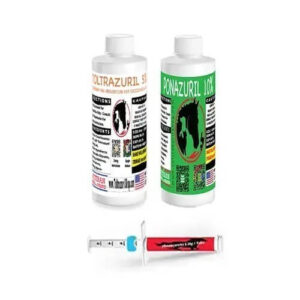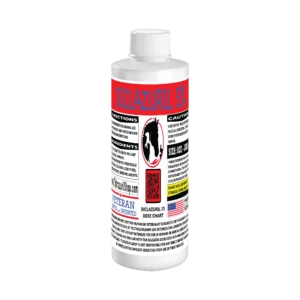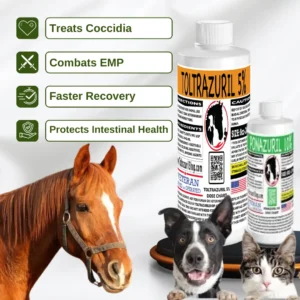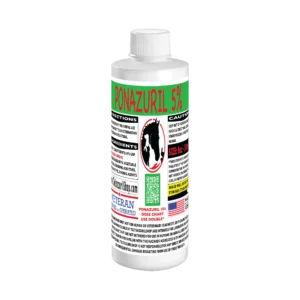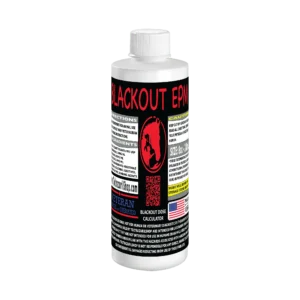-
Animal Products
EPM & Ulcer Eliminator Bundle for Horses
Rated 0 out of 5$269.95Original price was: $269.95.$199.95Current price is: $199.95. Add to cart -
Animal Products
Diclazuril 5% Liquid Solution
$19.95 – $29.95 Select options This product has multiple variants. The options may be chosen on the product pageRated 0 out of 5 -
Animal Products
Toltrazuril Liquid Solution
$4.95 – $999.95 Select options This product has multiple variants. The options may be chosen on the product pageRated 0 out of 5 -
Animal Products
Ponazuril Liquid Solution
$19.95 – $499.95 Select options This product has multiple variants. The options may be chosen on the product pageRated 0 out of 5 -
De-Wormers
Blackout EPM & Coccidia Solution: Fast-Acting Treatment for Coccidiosis and EPM Symptoms
Rated 0 out of 5$119.99Original price was: $119.99.$69.95Current price is: $69.95. Add to cart
EPM in Horses – Premium Solutions for Equine Health
Welcome to EPM in Horses, your trusted source for premium solutions to combat Equine Protozoal Myeloencephalitis (EPM) and other equine health concerns. We provide high-quality treatments to help your horse recover faster, regain strength, and maintain optimal health.
Your Horse Deserves the Best Care
At EPM in Horses, we understand the challenges of EPM and other equine infections. That’s why we offer a carefully curated selection of effective medications to combat protozoal infections, support intestinal health, and promote overall well-being.
Top-Selling Products for EPM Treatment
- EPM & Ulcer Eliminator Bundle for Horses – A comprehensive bundle designed to fight EPM while protecting your horse’s digestive system. Get it now at a discounted price!
- Diclazuril 5% Liquid Solution – A trusted treatment for EPM and coccidiosis in horses. This solution helps in faster recovery and overall health improvement.
- Toltrazuril Liquid Solution – Effectively combats protozoal infections while strengthening the immune system. Available in various sizes for your convenience.
- Ponazuril Liquid Solution – A highly effective treatment for EPM and coccidiosis, helping horses recover quickly and stay healthy.
- Blackout EPM & Coccidia Solution – A fast-acting formula designed to eliminate EPM symptoms and provide relief from coccidiosis.
Why Choose EPM in Horses?
- Veterinarian-Approved Solutions – Our products are trusted by professionals for their high effectiveness.
- Fast-Acting Treatments – Designed to help horses recover quickly and effectively from EPM and related infections.
- Competitive Pricing – We offer affordable solutions to ensure every horse gets the care they need.
- Easy & Secure Shopping – Browse our online store and enjoy a hassle-free purchasing experience.
How to Identify & Treat EPM in Horses
- Recognize Symptoms Early – If you notice weakness, loss of balance, difficulty swallowing, or abnormal behavior, seek veterinary advice immediately.
- Get an Accurate Diagnosis – Your vet may conduct neurological exams, blood tests, or cerebrospinal fluid analysis to confirm EPM.
- Choose the Right Treatment – Our Diclazuril, Ponazuril, and Toltrazuril solutions are proven to combat EPM and related infections.
- Follow a Treatment Plan – Administer the prescribed medication and monitor your horse’s progress for signs of improvement.
Provide Supportive Care – Proper nutrition, hydration, and stress reduction techniques can significantly improve recovery time.
Customer Testimonials
“EPM in Horses saved my mare! After using the Toltrazuril solution, she’s back to her normal, energetic self.” – Michael D.
“The EPM & Ulcer Eliminator Bundle was a game-changer for my horse. He recovered fast and stayed healthy.” – Samantha R.
“Highly recommend the Blackout EPM solution! It worked quickly, and my horse showed visible improvement within weeks.” – John L.
Support Your Horse’s Recovery Today!
EPM can be devastating, but with the right treatment, your horse can regain its strength and vitality. Shop now and give your horse the best possible care!
Browse Our Products & Order Today!
